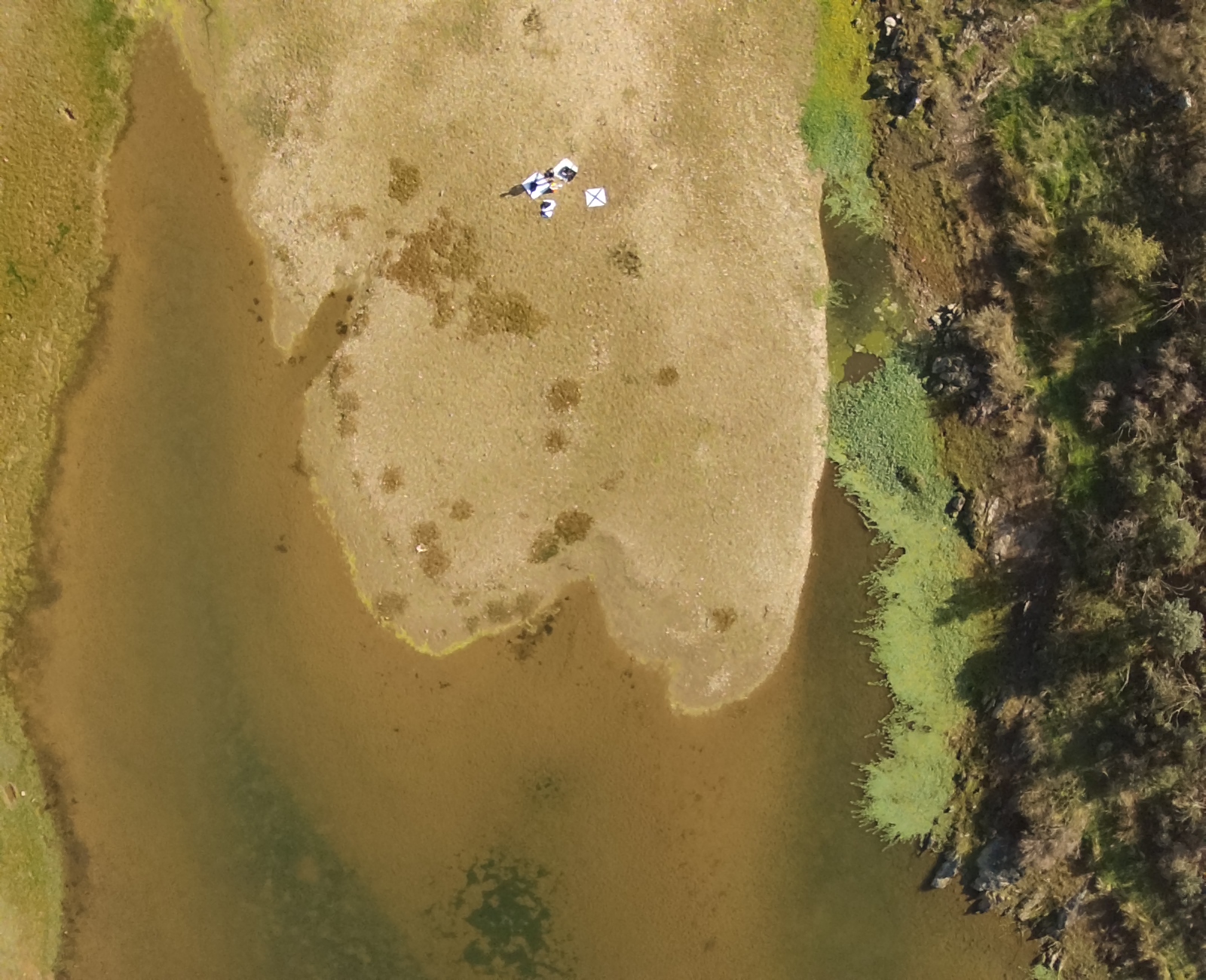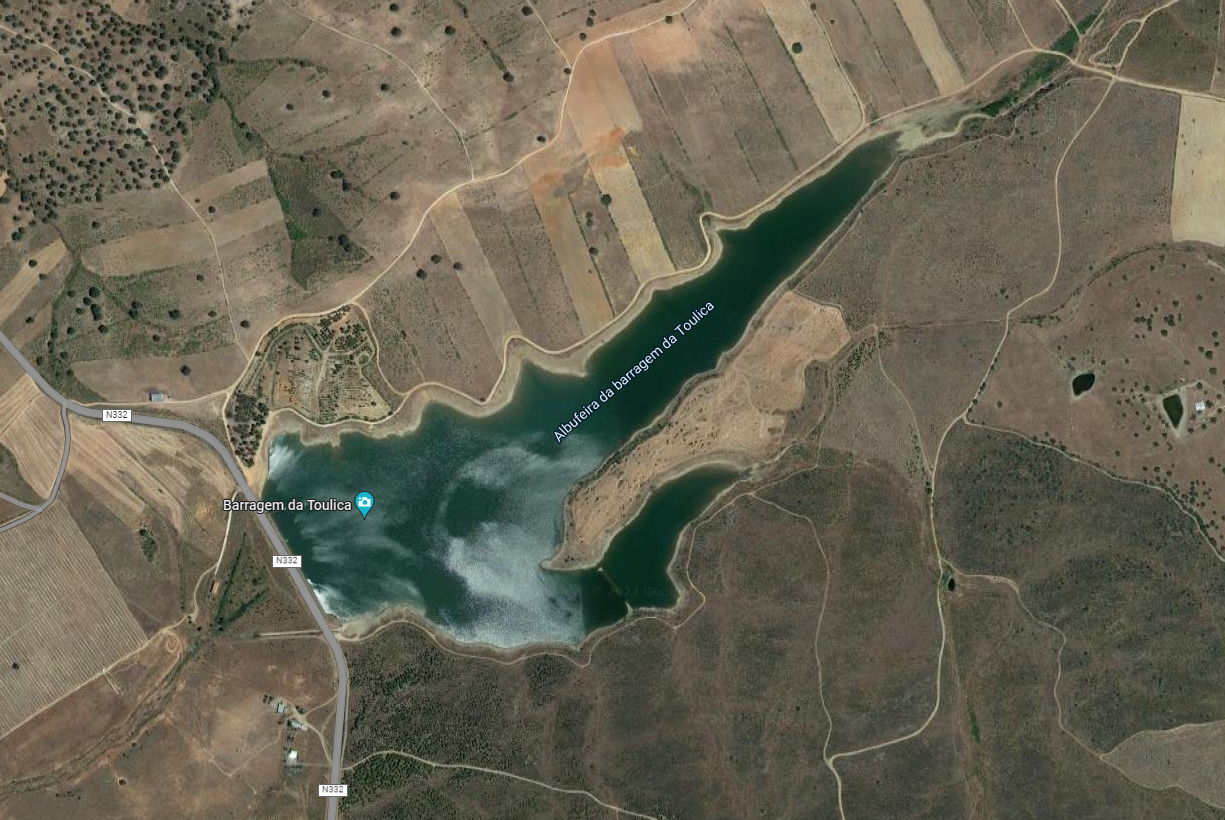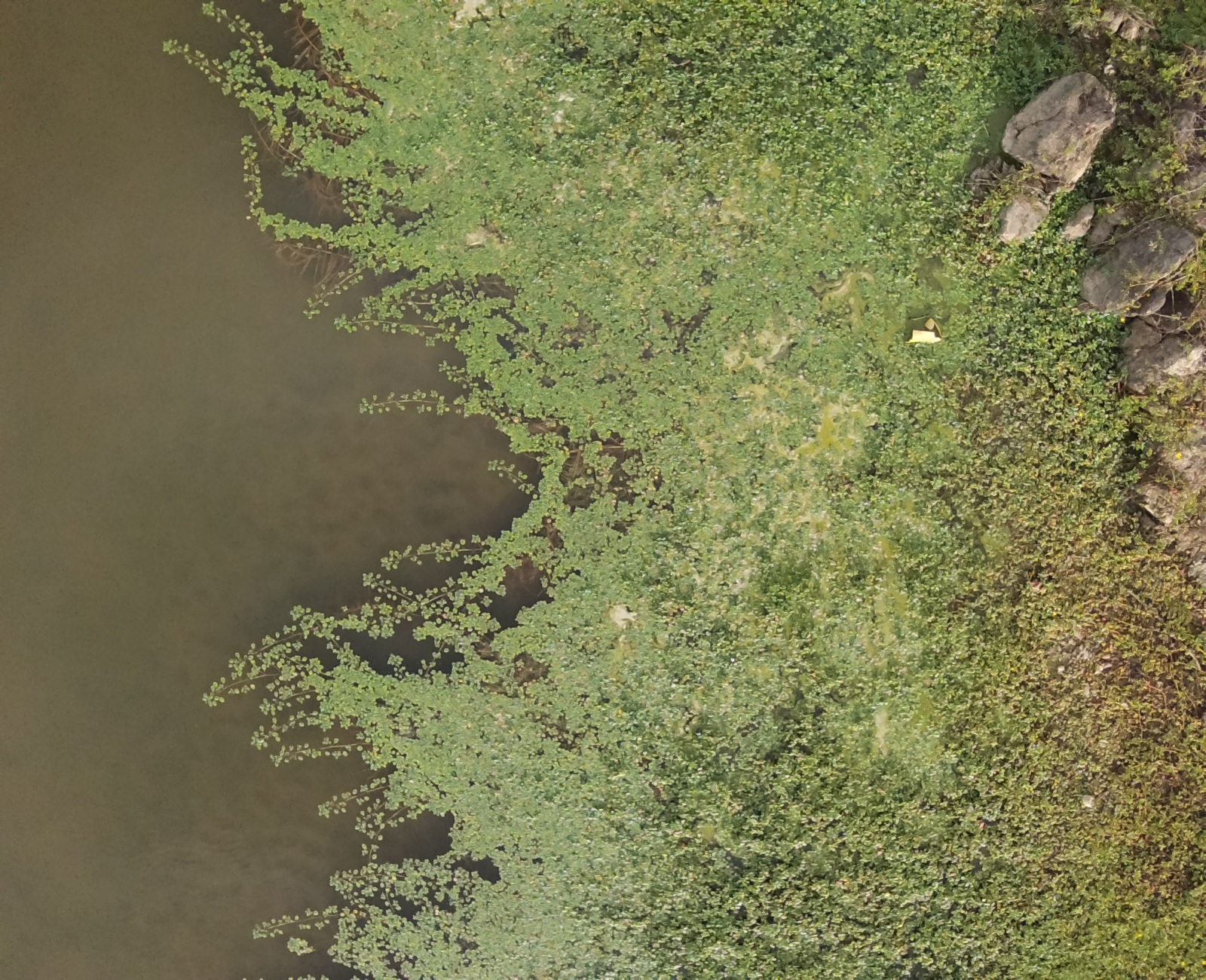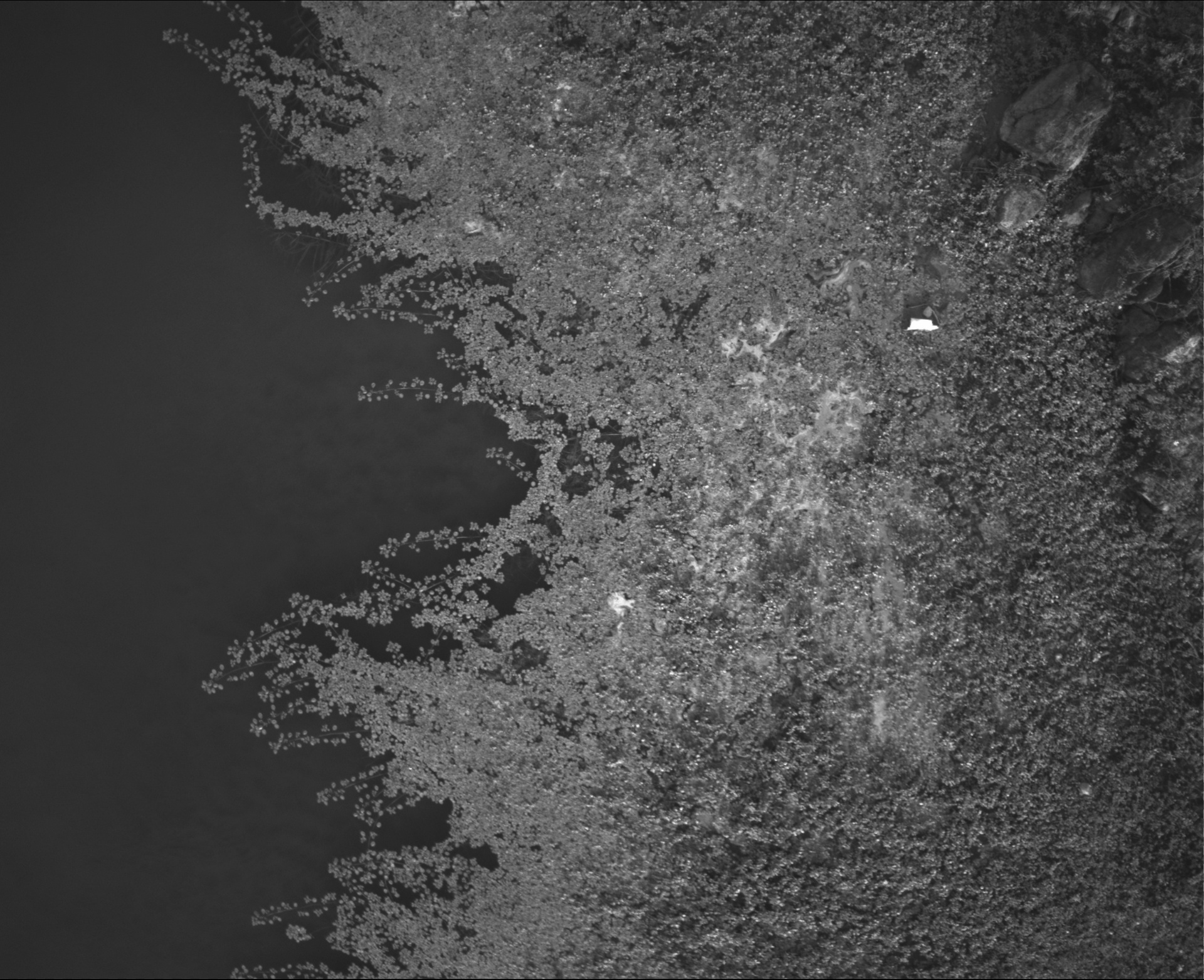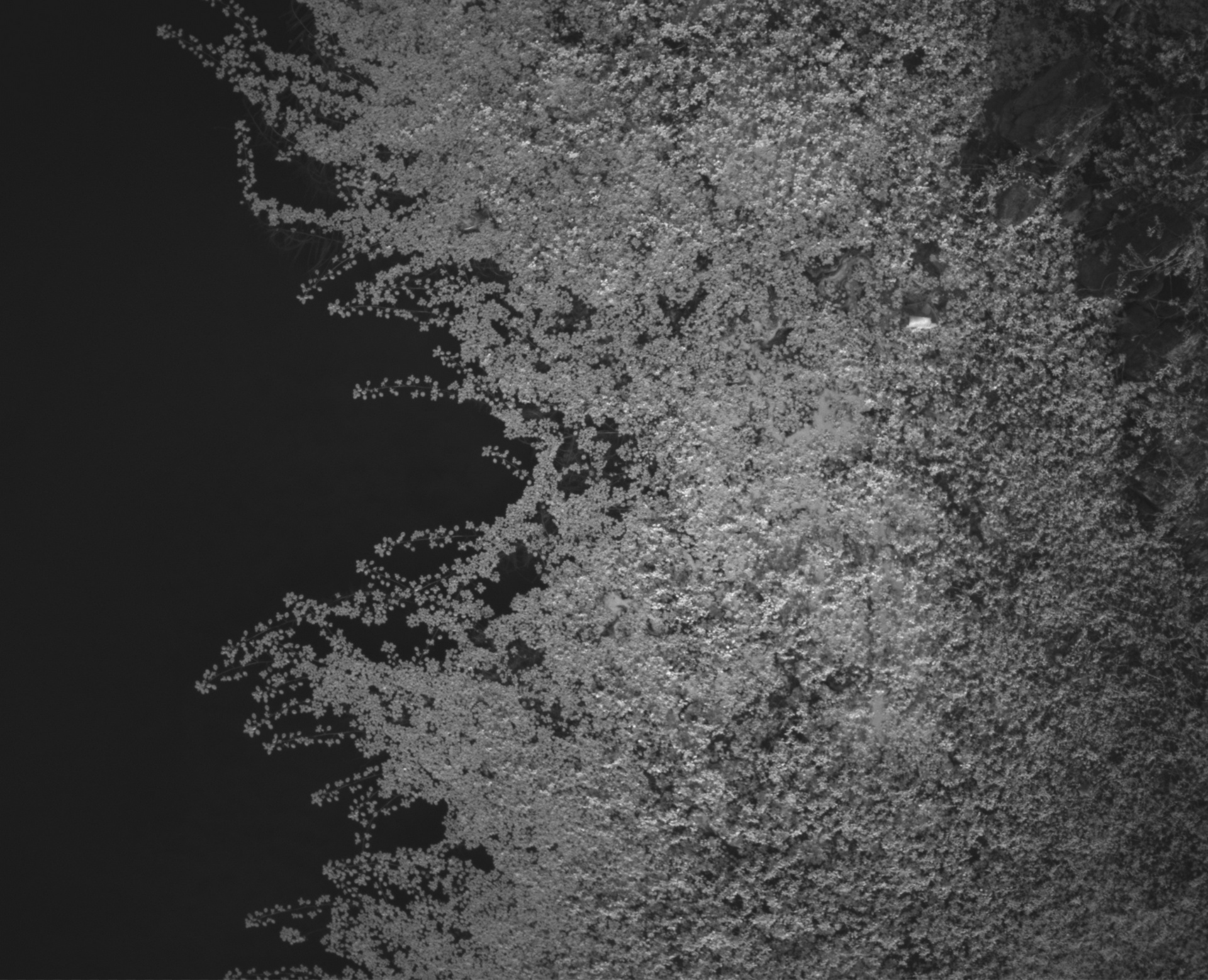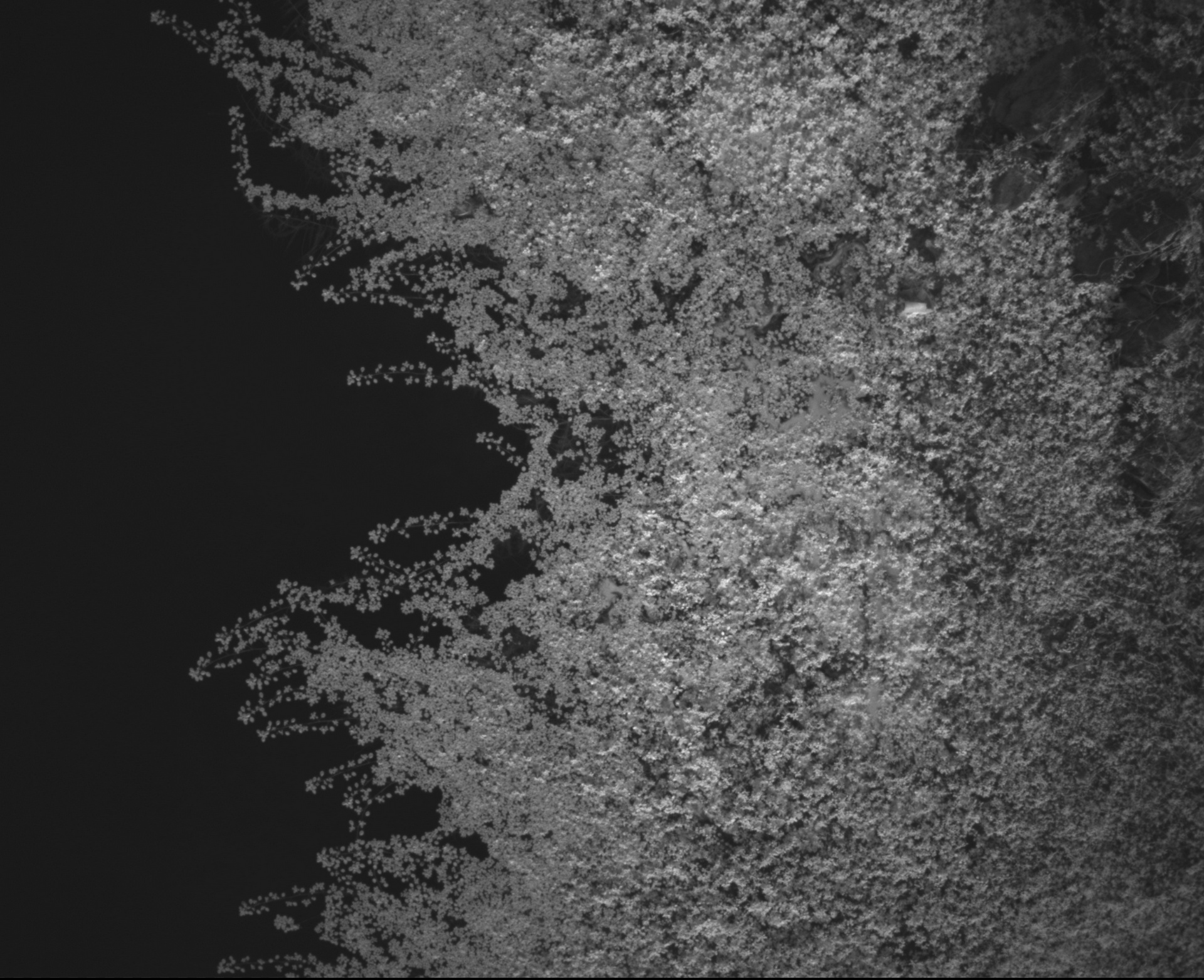Ludwigia peploides
Ludwigia peploides is a species natural to South America that invades rivers, ponds, and rice fields. It can grow in deep waters, as a fully or partially submerged plant, and form floating mantles. When this happens, it prevents the entry of light affecting submerged species and blocking the water lines, affecting navigation, fishing, and recreational use. It competes for space by eliminating native species and producing substances that inhibit the germination and growth of other species. It reproduces vegetatively through stem fragmentation but also seeds. The species stems can grow between 10 cm and 3 m, hence its ability to form large mantles. The leaves are a bright green (that most of the time stands out from the rest of the present vegetation) and can have a lanceolate or oval shape. They measure between 2.5 and 3.8 centimeters, and both the stem and the leaves have different trichomes distributed over the surface. Ludwigia peploides also have solitary flowers with yellow petals, which measure from one to 1.5 cm in length, and which develop from tassels emerging from the upper part of the axillary bud. The species blooming period occurs from midspring to early fall, and during this period, the plant is easily identifiable. This is also the period where the species grows the most.
